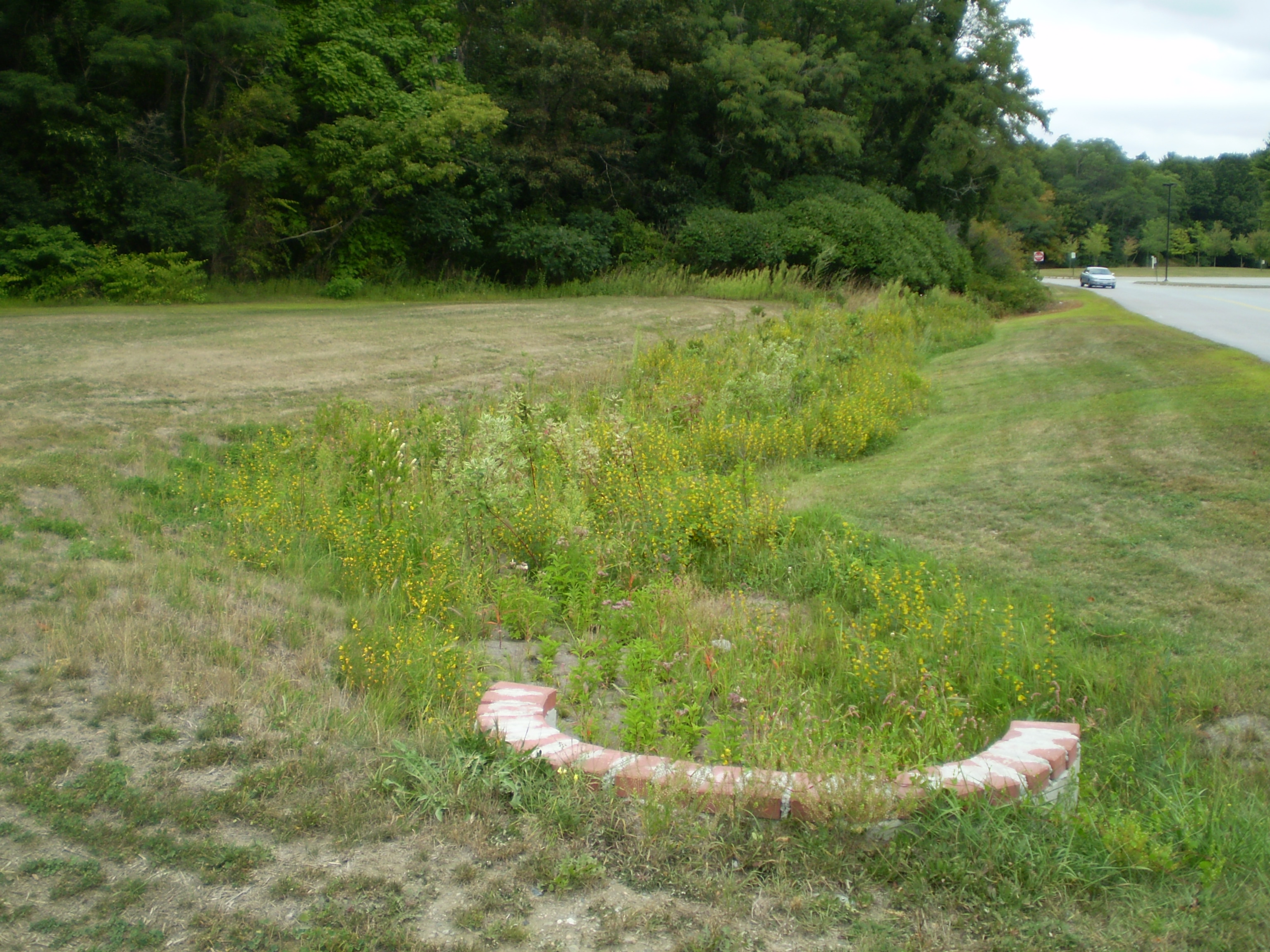Filter Strip, Vegetated

Description
A vegetated filter strip is an area of vegetation for runoff to flow through before it leaves a disturbed site or enters into a designed drainage system. It improves water quality by removing sediment and other pollutants from runoff as it flows through the filter strip. Some of the sediment and pollutants are removed by filtering, absorption, adsorption, and settling as the velocity of flow is reduced.
Where Practice Applies
This practice applies to any site where adequate vegetation can be established and maintained. Vegetative filter strips can be used effectively:
- Surrounding stormwater management infiltration practices to reduce the sediment load delivered to the structures;
- Adjacent to water courses such as waterways and diversions and water bodies such as streams, ponds, and lakes;
- At the outlets of stormwater management structures; or
- Along the top of and at the base of slopes.
- A vegetative filter strip is designed to provide runoff treatment of conventional pollutants but not nutrients. This practice is not designed to provide stream- bank erosion control. A vegetative filter strip should not be used for conveyance of larger storms because of the need to maintain sheet flow conditions. Also, the filter strip would likely be prohibitively large for this application.
Planning Considerations
- Filter strips may occur naturally or be constructed. It is important that filter strips be designed and constructed so that runoff flows uniformly across the filter strip as sheet flow. Once the flow becomes concentrated in rills, the effectiveness of the strip is greatly reduced. It is essential that some type of de- vice such as a level spreader or shallow stone trench be used to distribute the runoff evenly across the strip. Natural filter areas can provide excellent pollutant removal, particularly those areas left adjacent to natural water courses and bodies of water. It is also important to evenly distribute the runoff into these natural areas for best performance. These natural areas can provide excellent wildlife habitat and travel corridors.
- To prevent soil compaction, no equipment should be allowed to operate within the filter strip area. Uncompacted soil encourages infiltration and minimizes rapid surface runoff.
Design Recommendations
- Drainage Area: Maximum recommended drainage area is 5 acres.
- Entrance Conditions: Runoff must be introduced to the filter strip as uniform sheet flow. A level spreader can be used to distribute the runoff onto the filter strip by constructing the lip of the spreader and the top of the strip at the same elevation or contour. In some cases, a shallow stone trench can be used to intercept the runoff and allow the water to outlet evenly as long as the lower edge of the stone trench is constructed level. Make provisions to avoid flow bypassing the filter strip.
- Length: Filter strip length (parallel to flow) should be designed to produce a water residence time of at least 20 minutes (the length should normally be in the range of 100-200 feet). Vegetative filter strips should not receive concentrated flow discharges.
- Slope: Vegetative filter strips should not be used on slopes greater than 15 percent because of the difficulty in maintaining the necessary sheet flow conditions.
- Width of Strip: The minimum width of a filter strip should be 20 feet for slopes up to 1%. An additional 4 feet for each 1% of slope should be added. Experience has found that strips from 50 to 75 feet wide perform best.
- Vegetation: A dense stand of vegetation is necessary for a well functioning filter strip. A temporary diversion should be used to divert runoff away from the filter strip until good vegetation is established; otherwise rills will develop and reduce the effectiveness of the strip.
Maintenance
- Filter strips should be maintained as natural areas once the vegetation is established. The filter strip should be protected from damage by fire, grazing, traffic, and dense weed growth.
- Fertilization needs should be determined by on-site inspections. Supplemental fertilizer is a key factor, as most species take two to three years to become fully established.
- The filter strip should be inspected periodically and after every major rainstorm to determine if the entrance conditions are still uniform and level and to see if rills have formed. Any problem areas should be repaired promptly to prevent further deterioration.
References
Minnick, E. L., and H. T. Marshall, Stormwater Management and Erosion Control for Urban and Developing Areas in New Hampshire, Rockingham County Conservation District, August 1992.
Massachusetts Department of Environmental Protection, Office of Watershed Management, Massachusetts Nonpoint Source Management Manual, Boston, Massachusetts, June, 1993.
Washington State Department of Ecology, Stormwater Management Manual for the Puget Sound Basin, Olympia, WA, February, 1992.